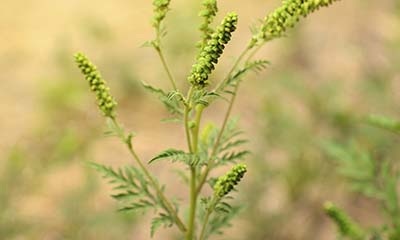May 2, 2016

A team of researchers from six universities and the USDA’s Agricultural Research Service surveyed certified crop advisors working in the Corn Belt regions of the United States and Canada to determine how giant ragweed is distributed and how it spreads.
A survey published in the journal Weed Science offers these key findings:
1. Distribution and spread. Results suggest that giant ragweed is spreading outward from crop fields in the east-central U.S. Corn Belt. The weed is most prolific near the upper Mississippi River and its major tributaries, as well as north of the Ohio River in Indiana and western Ohio.

Article in Journal Weed Science says nearly 60% of counties surveyed have resistant populations of giant ragweed. (Photo: sssss1gmel/Thinkstock)
2. Herbicide resistance. Nearly 60% of counties represented in the survey have giant ragweed populations that are resistant to ALS-inhibiting herbicides, to glyphosate or to both.
3. Impact of crop production practices. Giant ragweed populations are highest in fields that are managed with minimum tillage, planted continuously with soybean crops and treated with multiple applications of a single type of herbicide.
4. Impact of ecological factors. The abundance of giant ragweed in crop fields was highly correlated with its abundance in nearby noncrop environments. Populations of giant ragweed were highest in counties that offered early and prolonged periods of emergence and in crop fields with large populations of seed-burying earthworms.
What do these findings mean for growers, weed scientists and regulators?
“Managing giant ragweed in noncrop areas could reduce its migration into crop fields and slow its spread,” says Emily Regnier of Ohio State University, a member of the research team. “Where the weed is already established in crop fields, it is critical that growers focus on diversification. They need to plant a more diverse combination of crop species, use more diverse tillage practices and reduce their reliance on herbicides with a single site of action.”
Related: Learn more about invasive weeds
The full text of the article “Certified Crop Advisors’ Perceptions of Giant Ragweed (Ambrosia trifida) Distribution, Herbicide Resistance and Management in the Corn Belt” is now available in Weed Science Vol. 64, Issue 2, April-June, 2016.
Source: Weed Science Society of America
You May Also Like




